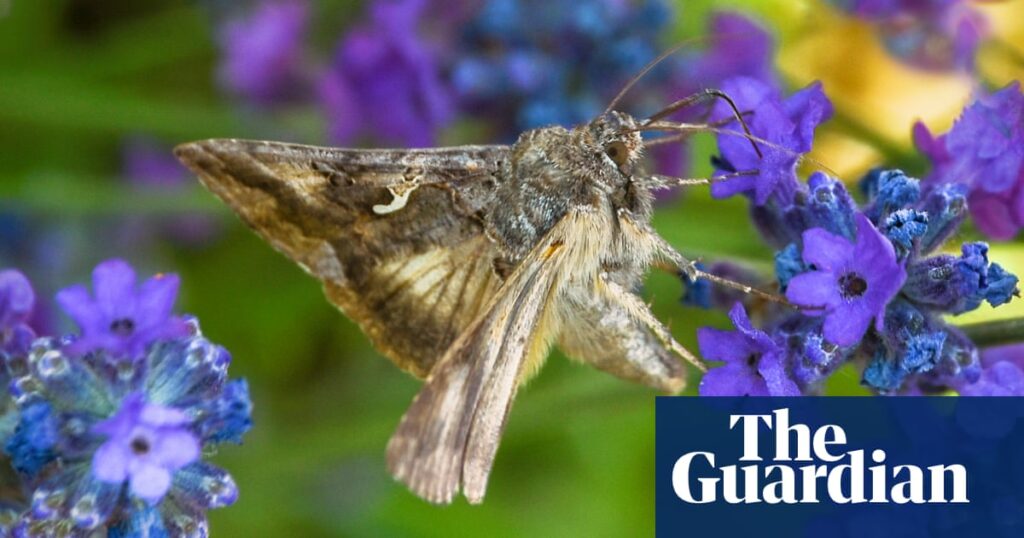They are vital pollinators who come out at night, but now moths have emerged into the bright light of day as co-creators of a new piece of music – composed using the insects’ own flight data.
Ellie Wilson composed Moth x Human in a protected habitat on Parsonage Down in Salisbury, Wiltshire. She assigned each of the 80 resident moth species a different sound, which was triggered when it landed on her monitor.
Around the automated melody created by the moths, she composed music for live violin, cello, trombone, piano and synths. Wilson will be interviewed and the piece performed twice, at London’s Southbank Centre on 5 July as part of the New Music Biennial.
“I wanted to compose a piece of music that was, in part, created by the insects themselves,” said Wilson. “The moths randomly created these little tiny melodies – little fragments and motifs which I used to compose the rest of the piece, including tapping on the body of the cello to imitate the sound of a moth getting trapped in a lamp.”
Moth populations are experiencing steep declines across the globe due to habitat loss, pesticides, and the climate crisis. This has a knock-on effect on the ecosystem because moths are an important food source for bats, owls and birds – but also because moths are critical to pollination, albeit in ways that are still not fully understand.
“Many of us don’t see moth numbers declining because they come out at night but they’re just as vital to our ecosystem as bees and butterflies,” said Wilson.
Wilson created the work with the support of Oxford Contemporary Music and with biodiversity scientists at the UK Centre of Ecology and Hydrology. The piece highlights the impact of the decline of the UK moth populations by ending with data from a different area: a farmland monoculture with only 19 moth species.
“I wanted the difference in moth populations to be audible,” said Wilson. “There’s so much sound at the beginning of the piece. At the end, there’s very little.”
Wilson said the scientists she teamed up with were enthusiastic about their work being turned into music. “They’ve been trying to get the message across about catastrophic moth decline but they can’t get traction using figures and data,” she said. “Music is an accessible way for people to understand the disaster unfolding.”
Wilson is not the only UK musician using nature to draw attention to the climate breakdown: Cosmo Sheldrake is appealing against the refusal of his legal attempt for the Ecuador forest to be recognised as a co-creator of a song he wrote.
after newsletter promotion
“The nature of the ecological crisis is fast, so striking, so completely urgent and total – and natural sounds have so much charisma and power – that music based on nature can reveal and communicate things about the natural world far more effectively and powerfully than science can,” Sheldrake said.
“So much can be revealed from listening to ecosystems,” he added. “Removing a single tree devastates the soundscape even though the forest might not look any different.”
Radio Lento recently celebrated its fifth anniversary, streaming “captured quiet” from 105 locations in 26 UK counties. And the UK-based design and architecture firm Heatherwick Studio is transforming an uninhabited island in Seoul, South Korea, into a public park, featuring musical performances based on soundwaves created by the mountainous terrain.
But Finland has taken things one step further, becoming the first country in the world to create an official soundscape.


